MedievalReporter.com
Covering history's most marvelous millennium
Join our newsletter!

Covering history's most marvelous millennium
Covering history's most marvelous millennium
The Franks were Germanic people that rose to great historical significance. They were originally a collection of tribes living on the Lower Rhine (in present-day Germany and the Netherlands). In the centuries that followed their kingdom became the largest European state of the Early Middle Ages. Befitting of its size, its king had himself crowned emperor. He ruled from Southern Denmark to Northern Spain and from the Atlantic Ocean to Austria. As a result, Frankish culture left a deep imprint on the history of many European nations.
This is a short intro from our Medieval Guidebook. Dive deeper into the subject by reading our articles about it.
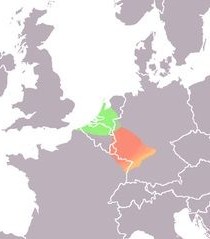
The Franks are first mentioned by Roman authors. At the time, they lived in the valleys of the Lower Rhine (Ripaurian Franks) and the IJssel (Salian Franks). It’s the Salians we will mostly focus on here.
During the 5th century CE, they moved into the Roman Empire. They settled in what is now Brabant province in the Southern Netherlands and Northern Belgium. This was not a hostile occupation: the Salian Franks were on good terms with the Romans and enlisted to fight in their legions.
This soon turned out to be an important relationship. At the time, Europe was under attack by the Huns. “Barbarian” Germanic peoples and Roman legions alike suffered defeats against these invaders from the East.
Near Châlons, in the northeast of current-day France, an epic battle took place. Salian Franks and Romans fought side by side against the Huns. Though the confrontation ended in a draw, it left both the Hunnic and Roman Empires in a weakened state.
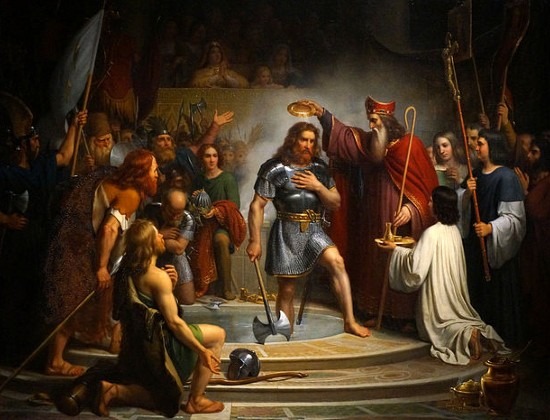
The Franks started to aggressively exploit this opportunity. Consequently, the Roman province of Gaul (Gallia), roughly contemporary France, fell into Frankish hands. King Clovis chose the Roman city of Lutetia (now Paris) as his new capital.
His successors drove other Germanic peoples, such as the Visigoths, out of Gaul. Others they subjugated, like the Burgundians (still a region in modern France). An interesting hybrid culture sprung up in the new Frankish kingdom, mixing Roman, Gallic, and Germanic elements.
A certain law of the Franks turned out to have remarkable consequences for world history - effects so far-reaching it simply became known as the Salian Law. This law arranged inheritance rights.
More specifically, the Salian Law enforced that when a man died, his possessions were to be divided between his sons. And since the Franks viewed their kingdom as their king’s personal property, the Frankish Kingdom, too, had to be carved up between brothers after the death of the king.
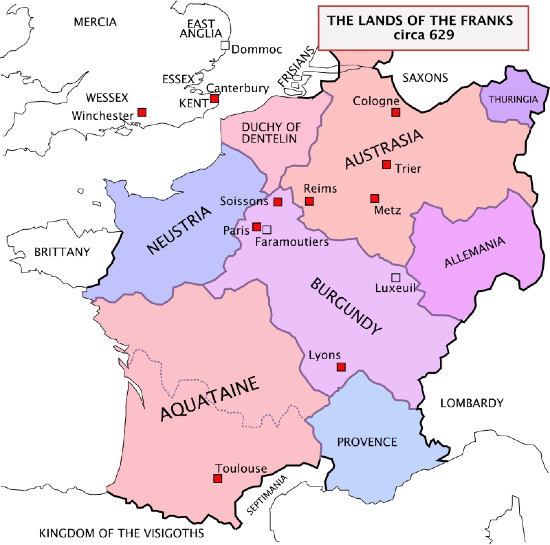
Over time, this meant that the dynasty that king Clovis helped found, quickly lost control of the kingdom. A succession struggle occurred every time a dying king had multiple sons. True power soon rested with the so-called “Mayor of the Palace”.
During the 8th century, one of these mayors, Charles Martel, ditched the old dynasty. He made himself King of the Franks. And his grandson was Charlemagne.
Charlemagne, roughly French for ‘Charles the Great’, united most of Western and Central Europe under Frankish rule. To reinforce his relationship with the Church, the pope crowned Charlemagne as emperor. His enlarged Frankish state became known as the Carolingian Empire, named after its founder.
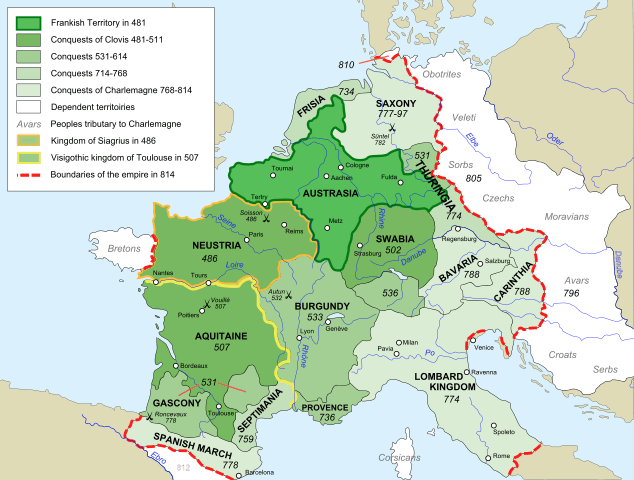
- advertisement -
- article continues below -
Charlemagne’s empire witnessed an explosion of medieval culture called the Carolingian Renaissance. There was a large increase in writing, arts, and architecture. It had a spectacular effect on education and culture in Francia - for the upper class, at least. The lower class enjoyed increased security because the old blood feuds between princes were over for now. Also, because Viking raids started to occur more frequently, Charlemagne had a coastal defense system constructed.
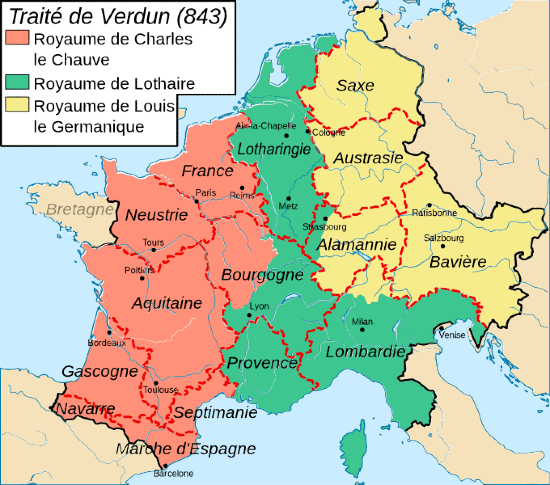
Alas, the Frankish Empire didn’t last very long. Once again, the Salian Law is to blame here. Charlemagne’s son had three sons, which meant that the empire was partitioned into three parts. Western Francia gradually evolved into Medieval France, whereas Eastern Francia developed itself into the Holy Roman Empire. The ruler of the area in-between, Middle Francia, had three sons as well. So this short-lived state split anew and branched into three different kingdoms, too.
The Salian Law made the Frankish political history somewhat tragic. But at least their kings and emperors tried to adhere to the rule of law. Furthermore, the Franks had a major influence on European history and culture. It turned out to be one of the most powerful states in Western Europe during the Early Middle Ages.
Ever since, eastern observers have simply used the term Franks to describe all Europeans. Whether Arabs fighting the Crusaders in the 12th century, Chinese meeting the Portuguese for the first time in the 15th, or Ottomans battling the English Royal Navy in the 20th: they all chose to call their adversaries “Franks”.
Disclosure: we work hard to provide you with exclusive medieval reports and guides. To make the Middle Ages accessible to everybody, we’d like this information to remain FREE. Therefore, some of the links below are affiliate links, meaning – at no additional cost to you – we will earn a small compensation if you click through.
Grab a short intro on another civilization from our Medieval Guidebook.